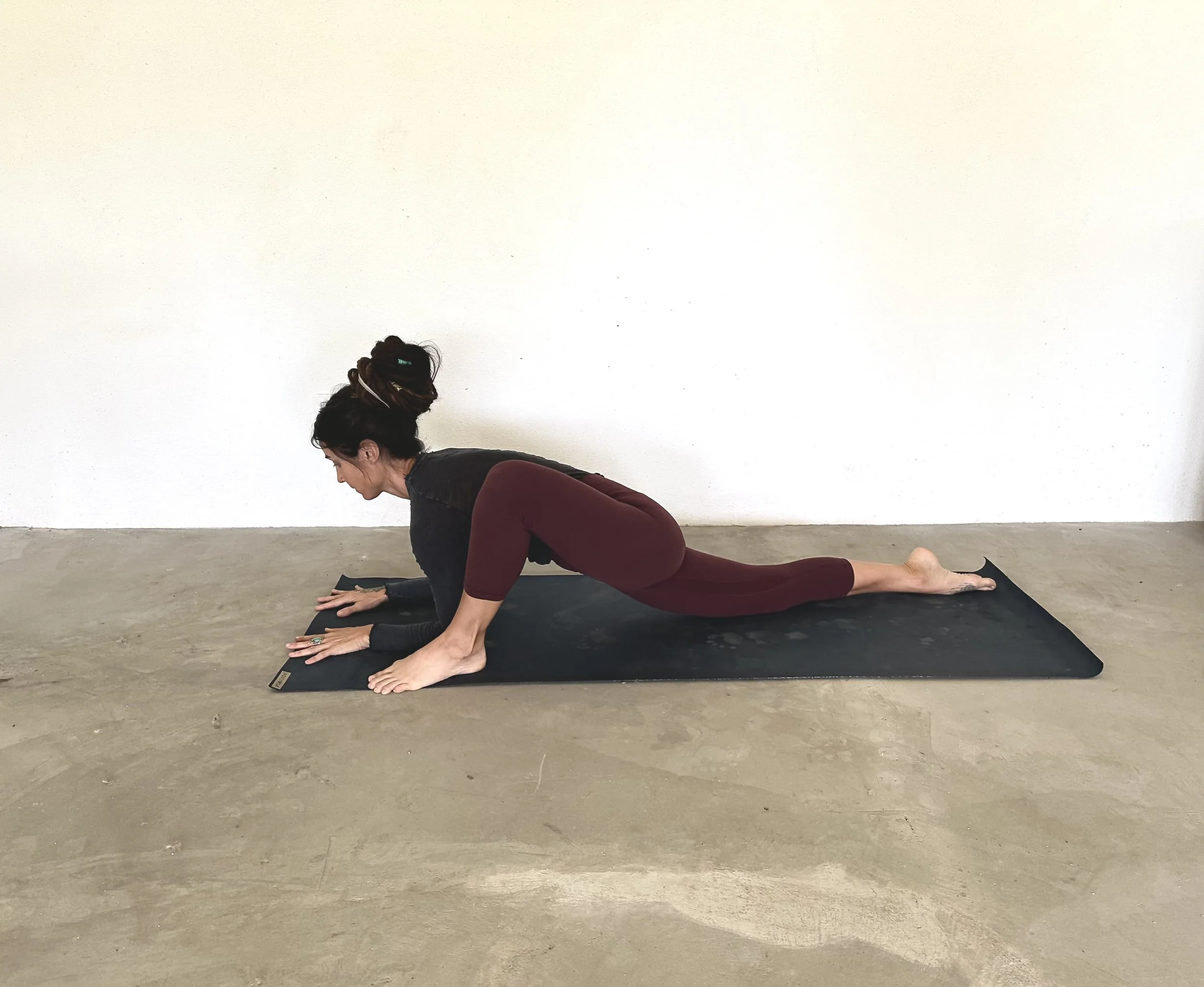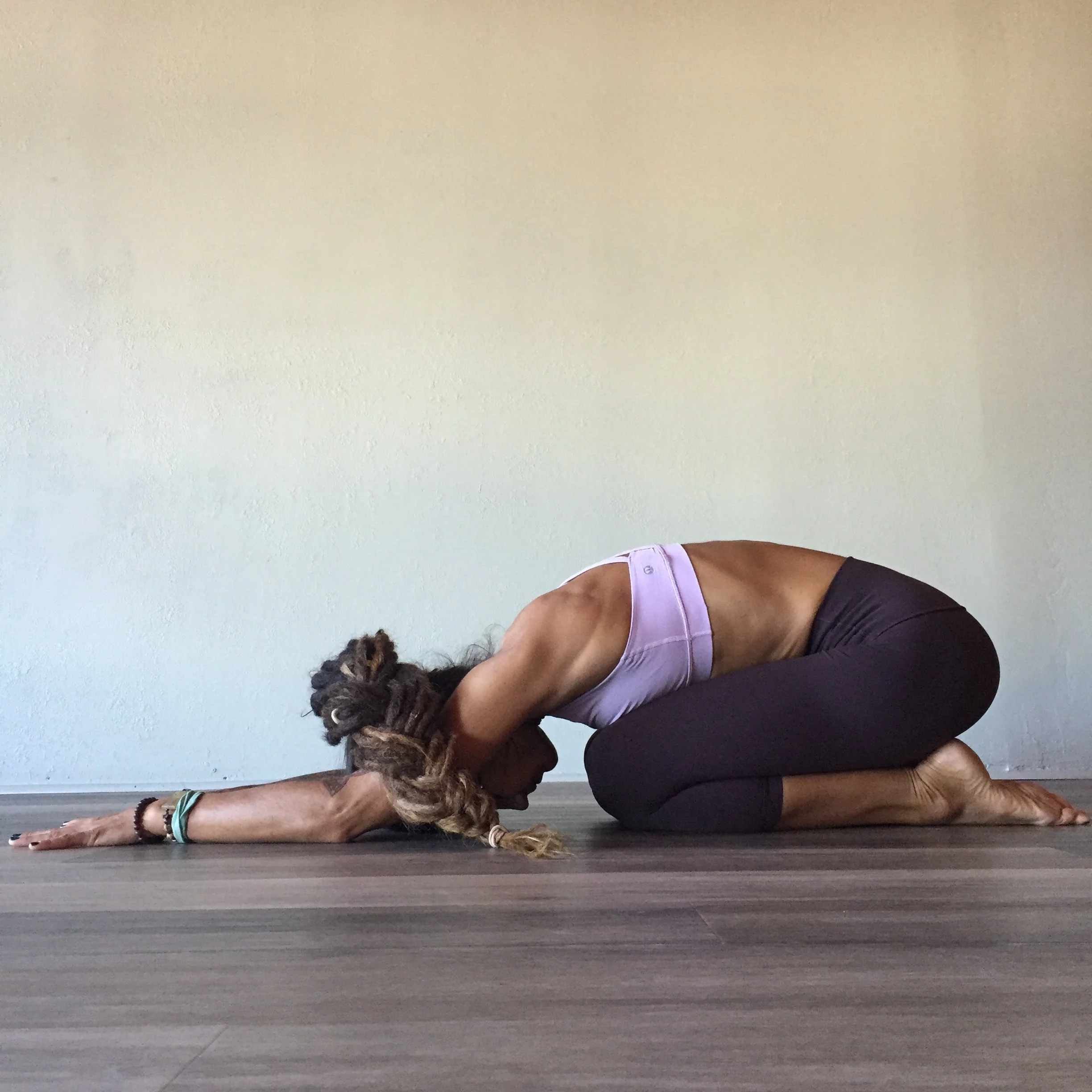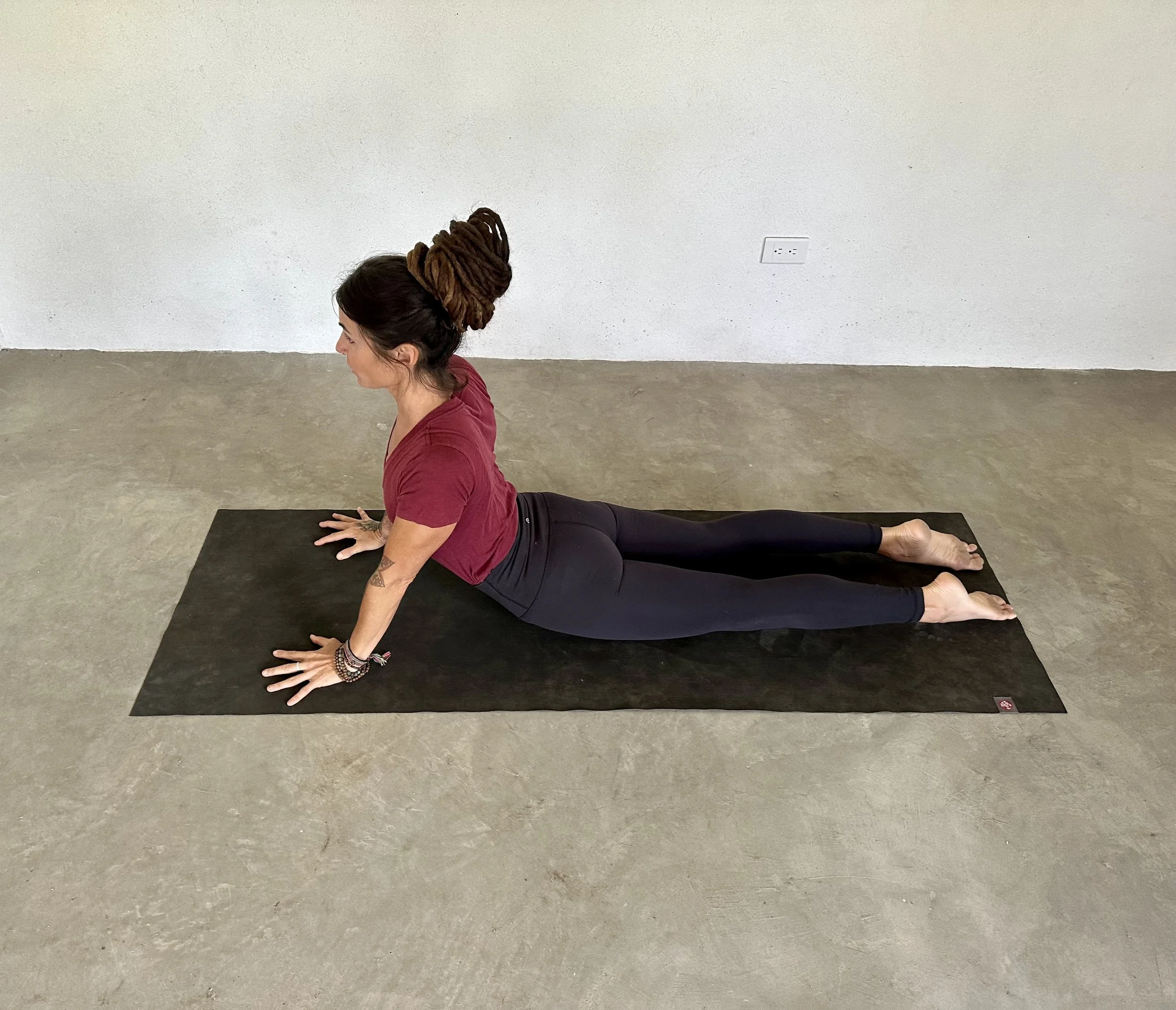The physical WHY behind phalakasana is more so about the strength than the stretch. Plank benefits the entire physical body, the arms, the legs, the glutes, the shoulders, the wrists, yet it is mainly associated with the strengthening of the core. Holding plank pose will increase your stamina and your stability it all other postures. Asana classes may use plank as a stand alone posture as well as a transition between other postures. We can note its place in the sequence of a vinyasa: plank to Chaturanga, to upward facing dog, to downward facing dog.
Read MoreWhen we break down the Sanskrit we see: Utthan which = bursting open, rushing up, and deep stretch, Pristha which = page in a book and also back of the body, and asana which = seat. How does this translate to the English, Lizard pose? I’m as baffled as you. Perhaps Western yoga observed the similarity of the shape to a lizard and disregarded the Sanskrit or perhaps there is a correlation that I am unaware. This is always humbling, exciting, and sometimes overwhelming in the world of yoga. The information, variations, and schools are vast and dense. A reminder to only know how much we do not know and allow that to be the inspiration for possibility at all times as well as strengthen our resolve to make yoga and in particular svadhyaya (study of self & text) a consistent, life long practice.
Read MoreThe history of this posture is unknown, regardless, the posture is common and for good reason; its’ benefits are ample. This posture is a great reminder that we get to honor and prioritize the history and roots of yoga, and we also get to be the authority of our own practice, adding and subtracting poses and variations dependent upon our own needs and mindful assessments. The Yoga Sutras of Pantjali will back us up on this as they state that our direct experience is the primary source of knowledge and of course we are doing our svadhyaya, to clean the lenses of our perception to ensure we account for our direct experience being unbiased by our own biases!
Read MoreAnjaneyasana promotes spinal extension, strengthening and stretching of the legs, the glutes, the groin, the core body, the hips, the ankles, the feet, the arms, the shoulders, and the chest. This posture also has the potential to improve balance, posture, relieve lower body soreness, and more dependent upon specific variations and intentions.
Read MoreUttana Shishosana stretches the spine, the arms, the shoulders, the chest, and the abdomen. It is a slight inversion as your heart is above your head. This posture also has the potential to aid in relaxation, improve blood circulation in the stomach area, as well as relieve back, neck, and shoulder pain.
Read MoreBalasana promotes relaxation, spinal flexion and lengthening, stretching of the ankles and shins, and hip mobility. This posture also has the potential to aid in digestion, improve blood circulation, as well as relieve back pain.
Read MoreCat pose is a helpful, accessible posture for most and is commonly practiced in a combination with cow pose and you will hear instructors cue as if the postures are one, “let’s do some cat/cow.” Marjariasana is usually practiced as a warm up for spine mobility and in preparation for more intense back bends.
Read MoreThis posture also has the potential to improve lung function and respiratory health, increase circulation, improve digestion, relieve back pain, as well as improve posture. Because this posture is often practiced with cat pose, it also aids in spinal mobility as well as a general awareness of the spine itself and its’ natural curvature.
Read MoreUrdhva Mukha Svanasana creates spinal extension which in turn stretches the front body from the chest all the way down to the tops of the feet, while strengthening the arms, wrists, and shoulders and of course, the back body, primarily the spine. This posture also has the potential to improve lung function and respiratory health, increase circulation, improve digestion, relieve back pain, as well as improve posture.
Read MoreBhujangasana stretches the front body (from the chest all the way down to the tops of the feet) while strengthening the back body as well as the arms and shoulders. This posture also has the potential to improve lung function and respiratory health, increase circulation, improve digestion, relieve back pain, as well as improve posture.
Read More









